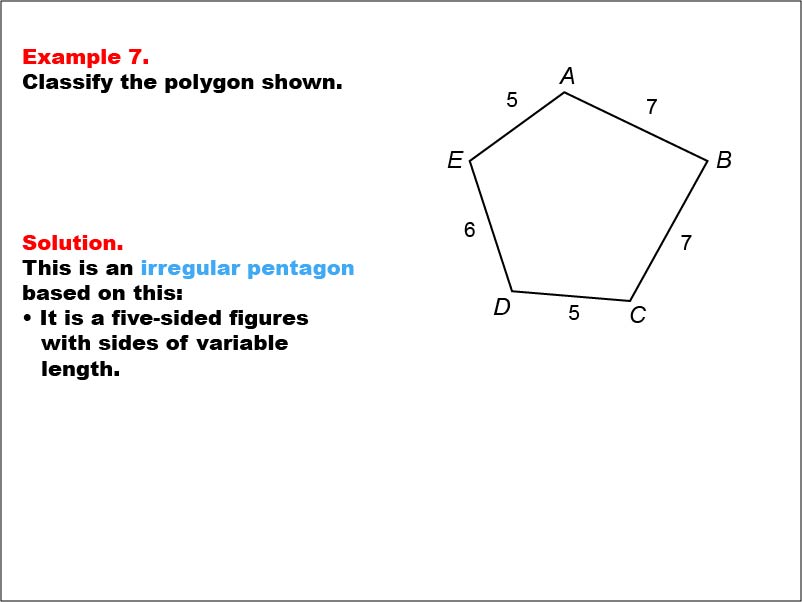
Display Title
Math Example--Polygons--Polygon Classification: Example 7
Display Title
Math Example--Polygons--Polygon Classification: Example 7

Topic
Polygons
Description
This example showcases a pentagon labeled with vertices A, B, C, D, and E, where the sides have different lengths: 5, 7, 7, 5, and 6 units. It illustrates an irregular pentagon, demonstrating that not all five-sided figures are regular.
Polygon classification is a crucial topic in geometry that helps students distinguish between regular and irregular shapes. This collection of examples provides a comprehensive look at various types of pentagons, highlighting the differences between regular and irregular polygons based on side lengths and angle measures.
Presenting multiple worked-out examples is essential for students to fully grasp the concept of polygon classification. Each example offers a unique perspective, allowing students to compare and contrast different scenarios and develop a deeper understanding of what makes a polygon regular or irregular.
Teacher's Script: Take a look at this pentagon, everyone. Notice the different side lengths. How does this affect our classification of the shape? Let's discuss why this pentagon is considered irregular and how it differs from the regular pentagons we've seen before.
For a complete collection of math examples related to Polygons click on this link: Math Examples: Polygon Classification Collection.
| Common Core Standards | CCSS.MATH.CONTENT.5.G.B.3, CCSS.MATH.CONTENT.7.G.B.6 |
|---|---|
| Grade Range | 6 - 8 |
| Curriculum Nodes |
Geometry • Polygons • Definition of a Polygon |
| Copyright Year | 2013 |
| Keywords | polygons, classification |